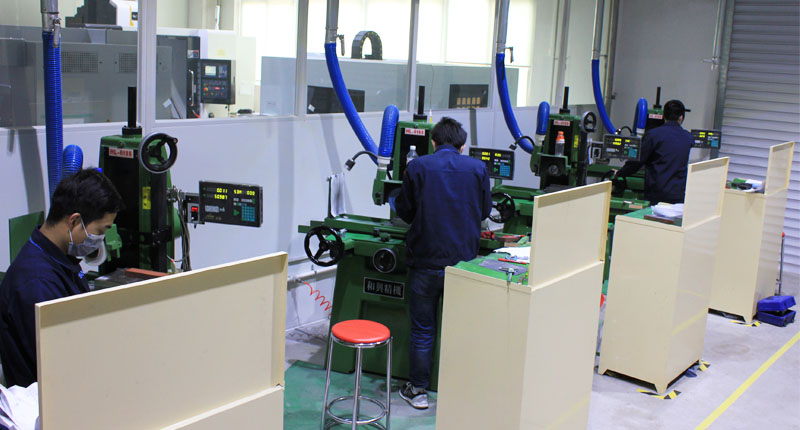The grinding process of precision mechanical parts is a high-precision and high surface quality machining method, commonly used for detailed trimming, polishing, and dimensional accuracy improvement of workpieces. Today, we will mainly introduce the general process and main characteristics of precision mechanical parts grinding processing.
General Process Of Grinding Precision Mechanical Parts
1. Workpiece Preparation:
Before grinding, it is necessary to prepare the workpiece. This may include cleaning the surface of the workpiece to remove dust and dirt, ensuring that the grinding process is not affected. At the same time, determine the precise dimensions and requirements of the workpiece
2. Select Grinding Tools:
Select appropriate grinding tools such as grinding stones, grinding wheels, etc. based on the material, shape, and requirements of the workpiece. The selection of grinding tools can affect the efficiency and quality of machining.
3. Install The Workpiece:
Install the workpiece on the grinding machine to ensure its fixation and stability, in order to avoid vibration and displacement during processing.
4. Adjust Processing Parameters:
According to the requirements of the workpiece and the characteristics of the grinding tool, adjust the processing parameters, including grinding speed, feed rate, depth, etc. The adjustment of these parameters will affect the processing results.
5. Grinding:
Start the grinding machine to make the grinding tool come into contact with the surface of the workpiece. According to the predetermined parameters, the workpiece will be gradually removed by grinding tools to form the desired shape and size.
6. Monitoring The Processing Process:
During the grinding process, it is necessary to continuously monitor the machining status of the workpiece. This may include measuring the size of the workpiece, checking surface quality, etc. to ensure that the machining results meet the requirements.
7. Lubrication And Cooling:
During the grinding process, high temperatures and friction may occur. To prevent overheating of the workpiece and maintain grinding stability, lubrication and cooling are necessary.
8. Fine Adjustment:
After completing rough grinding, fine adjustments may be necessary to ensure that the size, flatness, and surface quality of the workpiece meet the final requirements.
9. Inspection And Measurement:
After completing grinding, inspect and measure the workpiece to verify whether its dimensional accuracy and surface quality meet the design requirements.
10. Cleaning And Organizing:
After completing the processing, clean and organize the machine tool and work area to prepare for the next processing.
The Main Characteristics Of Precision Mechanical Parts Grinding
1. High Precision Requirements:
One of the biggest characteristics of precision mechanical parts grinding is the requirement for high precision. Usually, it is necessary to achieve dimensional accuracy at the submicron or even nanometer level to ensure accurate fitting of parts with other components.
2. High Surface Quality Requirements:
Grinding can obtain very smooth surfaces, so in the manufacturing of precision mechanical parts, the requirements for surface quality are often high, and it is necessary to avoid problems such as scratches and defects.

3. Complex Processing Technology:
The process of grinding is relatively complex and requires accurate control of processing parameters, such as grinding speed, feed rate, cutting depth, etc. Different workpieces and materials may require different processing techniques.
4. Less Material Removed
Compared with other cutting methods, the amount of material removed by grinding is relatively small, so grinding is an ideal choice for workpieces that are already close to the required shape to avoid excessive cutting.
5. Fine Adjustment Ability
Grinding processing can achieve small adjustments, and precise dimensions and shapes can be achieved by fine-tuning the parameters of the grinding tool.
6. High Equipment Requirements:
Grinding requires the use of high-precision grinding machines and tools to ensure the accuracy and quality of the processing.
7. Manual Intervention:
In the grinding process of precision mechanical parts, real-time monitoring and adjustment by operators are often required to ensure the smooth progress of the processing process.
Overall, precision mechanical parts grinding has unique advantages in manufacturing high-precision and high-quality parts, but it also requires strict processing technology and operational control to achieve the expected processing results.



